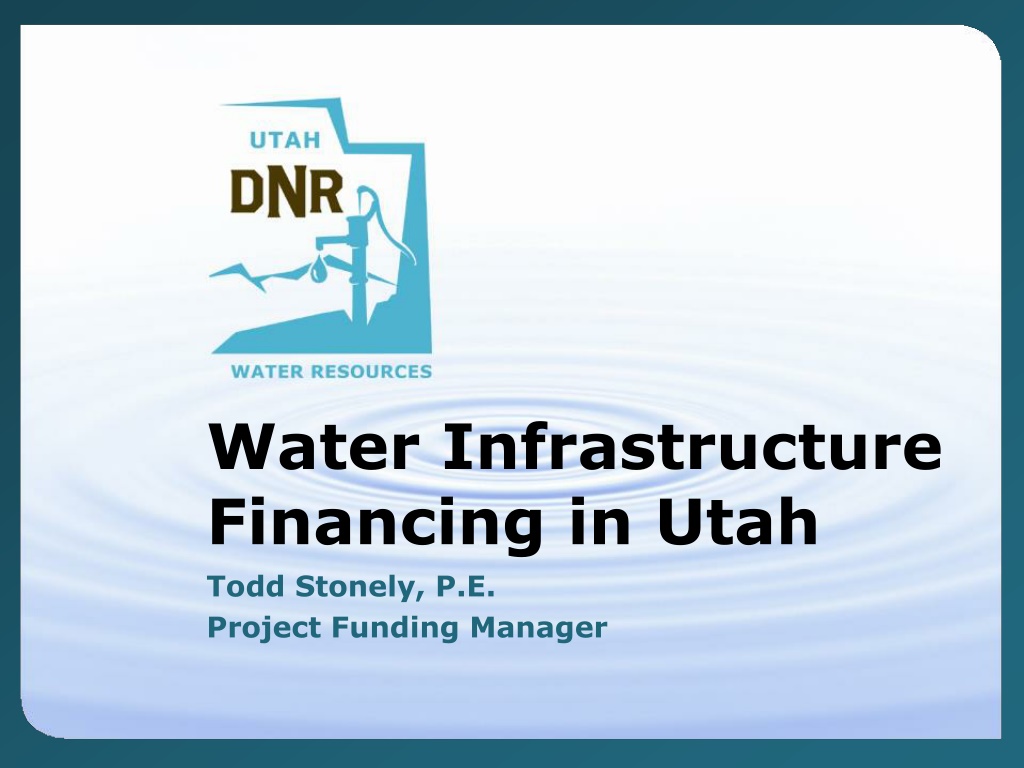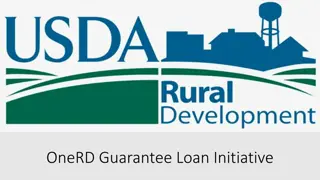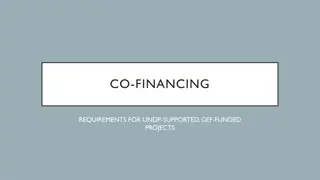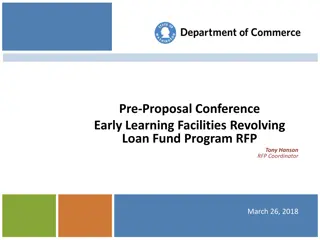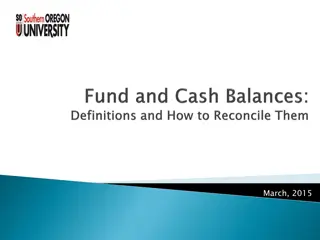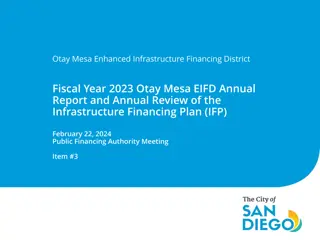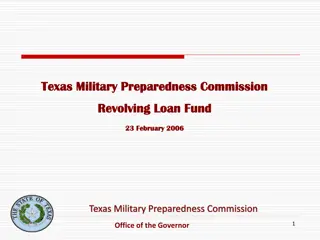Water Infrastructure Financing in Utah: Overview of Revolving Loan Funds
Utah's water infrastructure financing system is managed through revolving loan funds established by the Board of Water Resources. These funds date back to 1947 and have been consistently funded from various sources to support projects related to water supply, flood control, and dam safety. The program is overseen by the Board of Water Resources and is designed to provide low-interest loans and grants for water-related projects without the need for new legislative appropriations. The funds are not tied to the State Water Plan, allowing for flexibility in addressing areas of need in water supply separate from water quality funding.
Download Presentation

Please find below an Image/Link to download the presentation.
The content on the website is provided AS IS for your information and personal use only. It may not be sold, licensed, or shared on other websites without obtaining consent from the author. Download presentation by click this link. If you encounter any issues during the download, it is possible that the publisher has removed the file from their server.
E N D
Presentation Transcript
Water Infrastructure Financing in Utah Todd Stonely, P.E. Project Funding Manager
Revolving Loan Funds The Board of Water Resources manages four loan funds: Revolving Construction Fund (1947) Cities Water Loan Fund (1974) Construction & Development Fund (1978) Water Infrastructure Restricted Account (2016)
Revolving Construction Fund 1947-1986: Consistently funded from General Fund (Annual Avg. $1.4M) No appropriations Annual appropriations for Dam Safety (Avg. $4.1M)* 1987-92: 1993-Present: *Includes one time appropriations of $11M (2016) and $8.4M (2018) TOTAL = $137,000,000
Cities Water Loan Fund 1974-1989: Consistently funded from General Fund (Annual Avg. $1.4M) No appropriations Legislature raided fund ($3.6M) 1990-Present: 2009: TOTAL = $18,000,000
Construction & Development Fund 1979 & 1978: 1983: 1986: 1990: 1992-2006: $25M $20M $ 3M $15M Annual approp. from Sales Tax (Avg. $3.8M) Sales Tax (Avg. $13.9M) 2007-Present: TOTAL = $312,000,000
Water Infrastructure Restricted Account 2016: 2018: Future Years: $5.0M from General Fund $7.7M from Sales Tax Gradual ramp up to full 1/16 cent Sales Tax ($25-30M) TOTAL = $12,700,000
Revloving Funds Overseen by Board of Water Resources (WIRA Includes legislative process) Eligible entities: Water and Irrigation co. and Political Subdivisions of the State Any water-related project, including flood control Primarily low-interest loans Dam safety grants (limited) New legislative appropriations not required for carryover
Revolving Funds, cont. Funds not tied to State Water Plan State Water Plan often identifies areas of need Water supply funding not integrated with water quality funding
Other Sources of Funding Emergency appropriations (1977) State funds used as matching funds for federal funds (WaterSMART grants primarily) Public private partnerships?
Project Priority 1. Public health, safety, or emergency projects 2. Municipal water projects 3. Agricultural water projects 4. Projects with significant other funding
Lessons Learned Revolving funds work very well!! Strong support from Legislature, rural, and urban areas Priority systems and creative financing options help when funds are lean
Recommendations Collect and report accurate water data Robust planning efforts Work with key water users to make the case for needed investments Use existing mechanisms to distribute new money when possible
